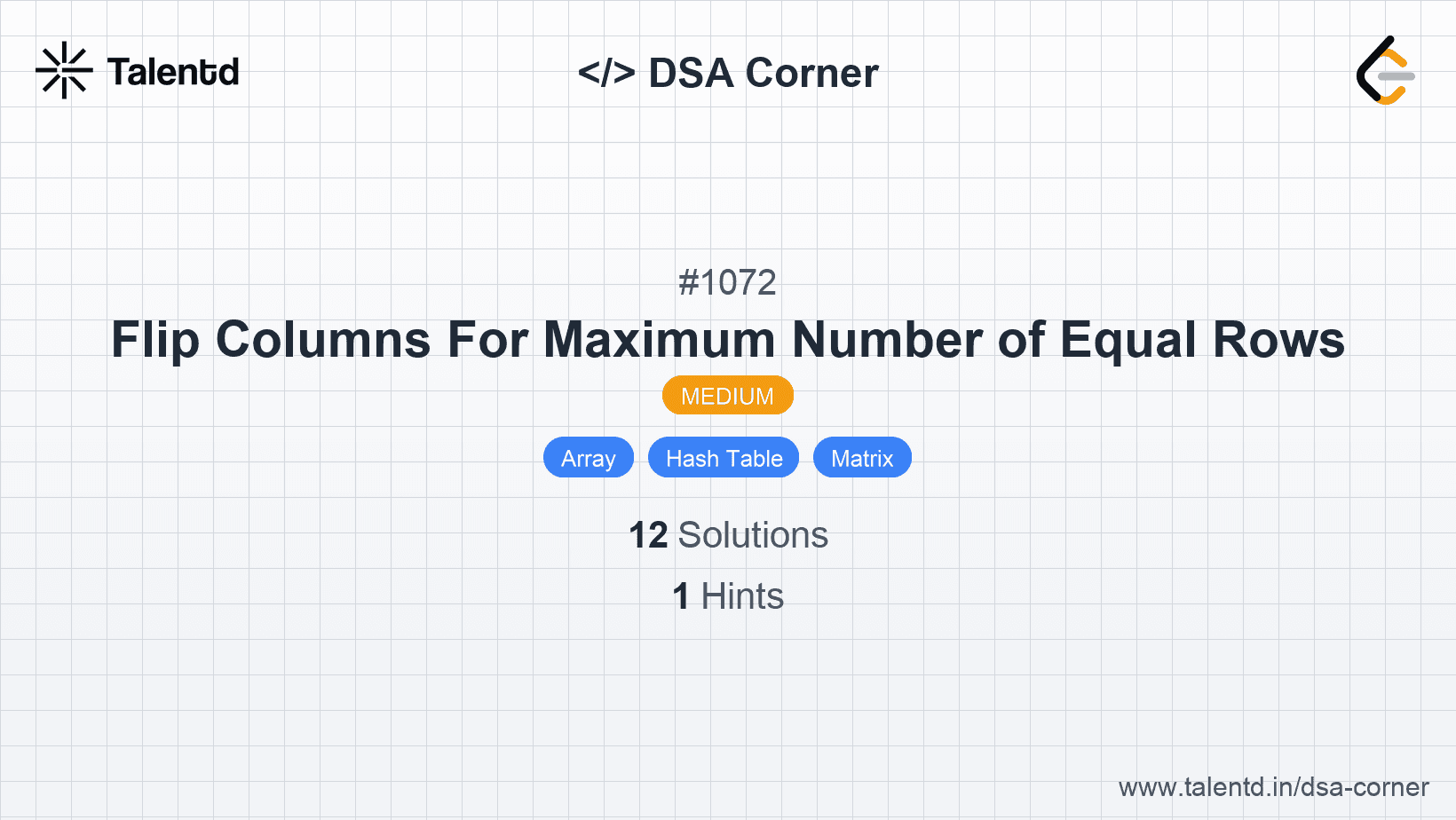
Sponsored
Sponsored
By considering identical or opposite binary patterns within rows, the task reduces to finding the maximum similar pattern. If row 'A' can be made equal to row 'B', they must have the same or opposite pattern for all columns.
Time Complexity: O(m * m * n) where m is the number of rows and n is the number of columns. Space Complexity: O(n) for the transformation key.
1function maxEqualRowsAfterFlips(matrix) {
2 const patternCount = new Map();
3 for (const row of matrix) {
4 const base = row.map(val => val === row[0] ? '0' : '1').join('');
5 patternCount.set(base, (patternCount.get(base) || 0) + 1);
6 }
7 return Math.max(...patternCount.values());
8}Using a Map to count each transformed row pattern, and compute the most frequent pattern using mapping rules analogous to each row's anchor column value.
This alternative method evaluates each row by considering both its native and entirely flipped transformations, tallying frequency counts using these dual patterns in order to discover the maximal frequency count of equivalent rows.
Time Complexity: O(m * n), Space Complexity: Usage is reduced because of the hash bucket with a distant hash-field.
This approach introduces a hashing mechanism to efficiently count the occurrences of different row patterns. Two interpretations, original and flipped, are hashed for each row, then comparison pairs are reduced via a single pass lookup.